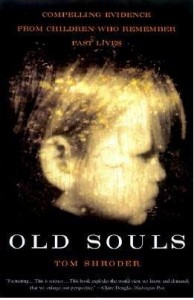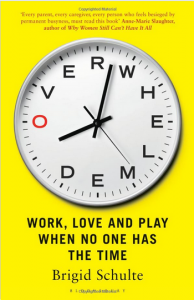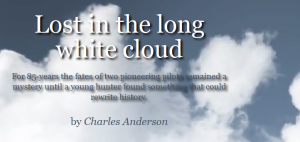As I was leaving the Post in 2009, joining forces with Brigid Schulte to conceive and produce the book that became Overwhelmed: Work, Love, and Play When There’s No Time was my first editing project. I remember telling my terrific agent Gail Ross about it and urging her to take a look. (She did, and she became Brigid’s agent as well.) “Publishing catnip,” was the phrase I used. It took almost five years to prove that true, but as of next week, Overwhelmed will be #10 on the New York Times nonfiction bestseller list — a rare accomplishment for a journalist (ie: non-celebrity, non-motivational guru) with a serious, heavily researched topic. It’s very gratifying, and all too rare, when a book of high quality also has great commercial success.
Author & Editor
News
ACID TEST Available on Amazon
My upcoming book, Acid Test, is already up on Amazon. It doesn’t come out until Sept, but you can avoid the fall rush and pre-order here.
Overwhelmed in Amazon Top 20 Third Day in a Row
Ever wonder what it takes for a book to move into the top-5 on Amazon’s sales list in a given day? Well my most recent editing project to see print, Brigid Schulte’s Overwhelmed: Work, Love and Play When No One Has the Time, made it to #4 on its first day out, and I have it on credible insider authority that it sold 1600 copies on Amazon alone that day. The book about the time crunch that has come to dominate modern life has stayed in the top 20 for three days now, and making the NYT bestseller list is looking increasingly possible.
My Tom Ridge Interview
I met up with Ridge in his posh office in downtown DC and found him charming, down-to-earth, and surprisingly eager to talk. His answers were thoughtful and direct. Wish all Republicans were more like him. The interview appears in the latest issue of Bethesda Magazine.
Overwhelmed Soars to Top of Amazon List
Overwhelmed by Brigid Schulte, my first book-editing project after leaving the Post in 2009 (and four years in the making), officially published today and shot right to the top of Amazon (#9 at 3 pm) off a morning appearance on NPR. Still, I’ve seen LOTS of books get NPR time, and almost none of them ever get that big a boost on Amazon rating (top 1000 is more common.) Old Souls only ever got to #12 — after a mention in the New York Times week in review — and that book sold 115,000 copies and is still at it. But this is the very first day of publication for Overwhelmed, whereas Old Souls only got that spurt months later — which means: Overwhelmed has a very good shot at making the NYT bestseller list, as first week sales include all the pre-sold books as well. Go Brigid.
Overwhelmed — Years In the Making
Overwhelmed, the sure-to-be-impactful book by Brigid Schulte that was my first post-Post editing project, publishes on March 11, going on five years after our first lunch meeting to discuss what a book exploring why our lives have become so frantic would look like. I’m proud of Brigid and proud of the book. She’s done something substantial and even groundbreaking. There have been a lot of books blathering about our over-subscribed lifestyles, but Brigid’s is the first that marshals all the research and penetrates the mysteries persuasively. Look for it on the bestseller list.
Overwhelmed, and Then Some
After Brigid Schulte published an article in The Washington Post Magazine about her run-in with a time-use expert who told her that in the life she experienced as overwhelmingly hectic, she actually had 30 hours of leisure time a week, I urged her to write a book-length exploration on the subject. We agreed to meet to discuss the idea at an authentic French bistro in downtown DC. It was a lovely summer day and I took my time walking from the Metro stop — both because I wanted to enjoy the warm breeze blowing down G street and because I knew from experience that Brigid, balancing hyper-involvement in the life of her two kids and fanatical devotion to her newspaper reporting, was pretty much always late. Sure enough, I arrived at the restaurant 10 minutes past the appointed hour to find only an empty table. I sat, ate all the bread in the bread basket, waited another 15 minutes, then called her. She was running late she said, just leaving an interview way across town, but she would get to the restaurant as fast as she could.
Fifteen minutes later she called again.
“My car just got totalled,” she said in that hollow voice people get when they are still somewhat in shock. A big van had swerved across several lanes right into her beloved Volvo. She assured me she was physically fine, just shaken up.
We rescheduled, I had the Nicoise salad, a leisurely glass of wine, and left.
That was the inauspicious beginning of what would become a multi-year project into which Brigid plunged so deeply I sometimes wondered if she would ever make it out. Her research took her from Scandinavia to North Dakota and back. Our phone editing sessions were almost always some form of multi-tasking for Brigid. She took my calls on buses, trains, airport jetways and even once in a public bathroom in a Mexican restaurant where she sought refuge from the ambient racket and scribbled notes on a wad of paper towels. All that frenetic labor produced such a massive volume of findings they threatened to overwhelm the engaging narrative of Brigid’s own struggle with the cultural sinks that pulled our lives into chaotic rabbit holes. That would have been a shame, since still trying to manage her family life, her career and writing the book simultaneously, Brigid was literally living her subject matter. As the Red Queen told Alice: “It takes all the running you can do, to keep in the same place. If you want to get somewhere else, you must run at least twice as fast as that!”
She had to do more than run. She had to scale a mountain of evidence. But her passion never flagged, and in the end, she managed to put it all together. As Publisher’s Weekly said in a starred review, “her research is thorough and her conclusions fascinating, her personal narrative is charmingly honest, and the stakes are high: the “good life” pays off in ‘sustainable living, healthy populations, happy families, good business, [and] sound economies.'”
It was a pleasure and a privilege working with Brigid and helping the book that comes out next week (March 11) take shape. I never predict books are going to get a tremendous amount of attention, because they almost never do. But I’m making an exception here.
Drum Roll, Please … What I Really Believe About Reincarnation
 OLD SOULS was published 14 years ago now, but rarely does a month pass without someone writing to me to ask if, ultimately, what I saw of Ian Stevenson’s claimed reincarnation cases persuaded me that reincarnation was real. If I had come up with a resounding “yes” answer for that, I have no doubt Old Souls would have sold a million copies rather than 100,000 copies, but, oh well. It just wasn’t that simple. I got another one of those inquiries today, and as I always attempt to answer (as opposed to simply saying, “Read the damn book!”) I figured I should reproduce that answer here, so at the very least I know where to find it, primed to copy and paste, next time I get the same question. Ok, here goes:
OLD SOULS was published 14 years ago now, but rarely does a month pass without someone writing to me to ask if, ultimately, what I saw of Ian Stevenson’s claimed reincarnation cases persuaded me that reincarnation was real. If I had come up with a resounding “yes” answer for that, I have no doubt Old Souls would have sold a million copies rather than 100,000 copies, but, oh well. It just wasn’t that simple. I got another one of those inquiries today, and as I always attempt to answer (as opposed to simply saying, “Read the damn book!”) I figured I should reproduce that answer here, so at the very least I know where to find it, primed to copy and paste, next time I get the same question. Ok, here goes:
Hi Suresh,
Haliburton’s Guilt Doesn’t Absolve BP
 Another Deepwater Horizon aftershock today with Haliburton, the contractor in charge of the cement job that was supposed to keep the Macondo well from blowing out, admitting that it destroyed evidence. As usual with this disaster, it’s very complicated, but the Haliburton admission does NOT mean that BP can now put the blame on its contractor, though that’s what the oil company is hoping to do.
Another Deepwater Horizon aftershock today with Haliburton, the contractor in charge of the cement job that was supposed to keep the Macondo well from blowing out, admitting that it destroyed evidence. As usual with this disaster, it’s very complicated, but the Haliburton admission does NOT mean that BP can now put the blame on its contractor, though that’s what the oil company is hoping to do.
This is from the Times:
“The Justice Department said Halliburton had recommended to BP, the British oil company, before the drilling that the well include 21 metal centralizing collars to stabilize the cementing. BP chose to use six instead. During an internal probe after the accident, Halliburton ordered workers to destroy computer simulations that showed little difference between using six and 21 collars, the government said, after which the company continued to say that BP was neglectful to not follow its advice.”
I’ll attempt to decode.
An oil well is two things: a hole in the ground from the surface to the oil deposit, and a pipe within that hole that acts as a tube through which the oil can flow back up to the surface. You dig a hole, then put a pipe in it, basically. Through the pipe, the oil can be drawn out in a safe, even flow. But if the highly pressurized oil breaks through the walls of the hole itself, it will blast to the surface in an uncontrolled explosion — a blowout. In order to assure this won’t happen, after the pipe is put down the hole, they pump in cement to seal the space between the exterior of the pipe and the well wall.
Centralizers are put in the well to hold the pipe in the middle of the hole. The reason is that if the pipe rubs up against the edge of the hole’s wall, the cement, pumped up from the bottom of the well, won’t be able to flow cleanly around all sides of the pipe, which is what needs to happen to form a good seal.
The Halliburton engineer assigned to the project did tell BP they needed to use 21 centralizers to assure good cement flow in Macondo. BP ignored that, and used only six. This is the reason some people think the Halliburton simulations indicating that 21 centralizers would have been no better than six — which Halliburton then destroyed — exonerate BP. If the advice BP ignored wasn’t good advice, then they were right to ignore it.
But that’s only a small part of the story. The Halliburton engineer originally told BP that the cement job they planned would fail. He recommended using an entirely different kind of pipe — more expensive and time consuming — to be safe. BP ordered him to go back and make the cheaper kind of pipe work.
That’s when he said, essentially, ok, if you insist, this is what you need to do:
Use 21 centralizers instead of 6.
AND to make sure that worked, perform a special test to determine if the cement flowed evenly around the pipe and didn’t leave any air bubbles or holes.
BP had the testing crew and equipment on board the Deepwater Horizon, but sent them home the morning of the blowout, without performing the test, to save a few thousand dollars.
So to sum up:
BP refused to accept Halliburton’s assessment that the cement job would fail unless they used a more expensive kind of pipe, and ordered the engineer to “make it work” with the cheap pipe.
Then BP ignored both parts of the plan to “make it work.” Even if the 21 centralizers wouldn’t have made a difference, the post-job test would have warned them that the cement had failed, and they could have found a way to fix it.
So though Halliburton acted criminally in destroying evidence, BP is still guilty, guilty, guilty.
Where’s the Journalistic Innovation? Down Under
A New Zealand journalist named Charles Anderson contacted me to help him with an unusual journalism project, a 7,000-word narrative to be linked with a multimedia documentary online for Fairfax Media, one of the country’s biggest news organizations. Check out the result here, and make sure you play the videos: http://www.lostplane.co.nz/main.html
Recent Comments
- Billy Hughes on Tom Shroder, Guru
- Jeff Gill on The “Misattribution of Meaning” (Or Not)
- Bruce M. Gregory on Flying Tigers Take a Bite out of Amazon
- Tara Solomon on Acid Test, Optimized Edition
- Tom Shroder on My WaPo Travel Story On the Dordogne
Archives
Copyright © 2025 Tom Shroder
Terms of Service & Privacy Policy | Data Access Request

